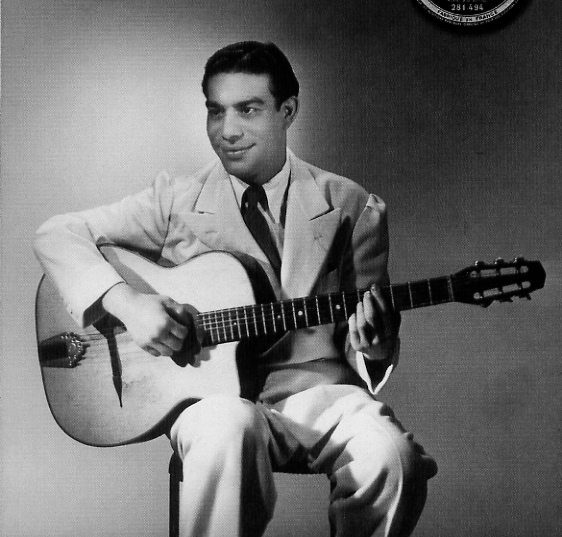
Sarane Ferret
Instrument: Guitar
Who is Sarane Ferret?
Étienne “Sarane” Ferret (1912–1970) was a celebrated French jazz and musette guitarist, closely associated with the legendary Django Reinhardt and the brother of renowned Gitan (gypsy) guitar players, Baro and Matelo Ferret.
Sarane’s musical journey began in Rouen, France, where he and his brothers made their way to Paris and crossed paths with Django Reinhardt in 1931. Known by his Gypsy nickname “Sarane,” he initially gained recognition as a banjo player in Bals Musette, collaborating with the esteemed Italian accordionist Vétese Guérino. He also shared the stage with Eastern European Gypsies in the Russian cabarets.
In the 1940s, Sarane formed his own quintet, often incorporating clarinets and the violin of Georges Effrosse into the classic gypsy jazz lineup. Although Effrosse’s time with the quintet was tragically cut short due to his death in a Nazi concentration camp in 1944, Sarane’s original compositions, such as “Cocktail Swing,” “Royal Blue,” and “Surprise-Party,” showcased his talent. He also recorded versions of Django Reinhardt’s compositions.
Throughout the 1950s and 1960s, Sarane continued performing, although his wartime quintet recordings did not receive the same level of recognition. He collaborated with various accompanists, including Jaques “Montagne” Mala, Laro Sollero, René Mailhes, and others. Sarane was married to Gusti Malha’s daughter Poupée and resided in Paris until his passing in 1970. The gypsy community paid tribute to him with a concert at the Olympia Hall in Paris, released as the record “La Nuit des Gitans.” His musical legacy lives on through collaborations with Francis-Alfred Moerman.
While influenced by Django Reinhardt, Sarane developed his own unique sound. His fretwork demonstrated a deliberate and perhaps cautious approach, with songs imbued with a remote and mysterious atmosphere, and melodies floating on enchanting airs of minor-key wistfulness. Throughout his career, Sarane was often seen and heard playing a Selmer guitar, a popular choice among French guitarists of that era. Towards the end of his life, he also explored a more mainstream, electric style, evident in his tracks on the album Tribute To Django, recorded for French radio in 1967 and released in 1989.